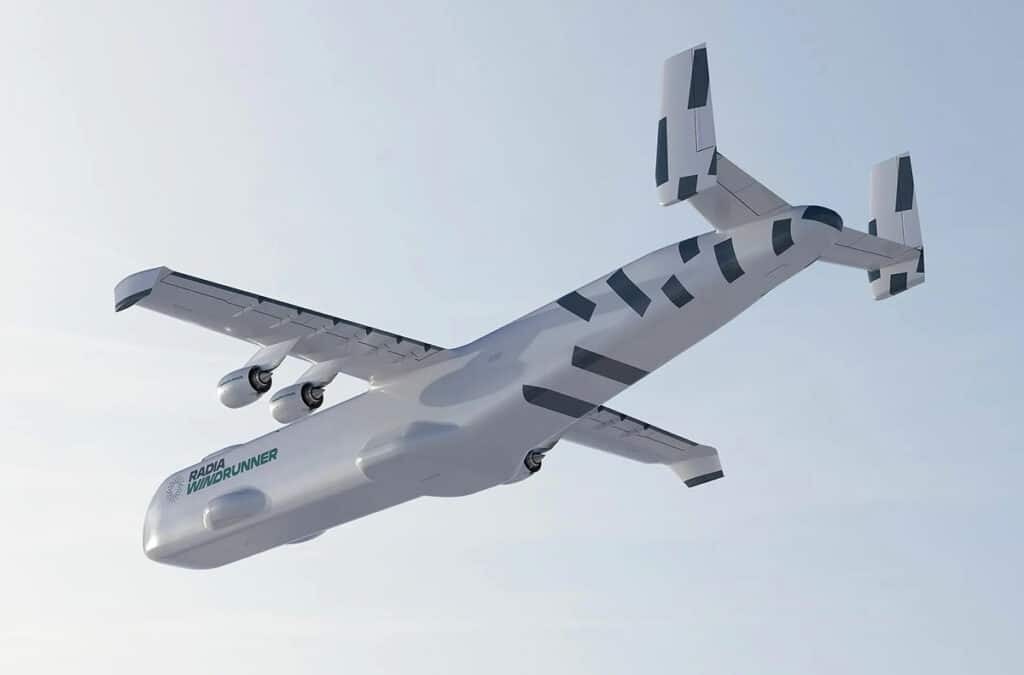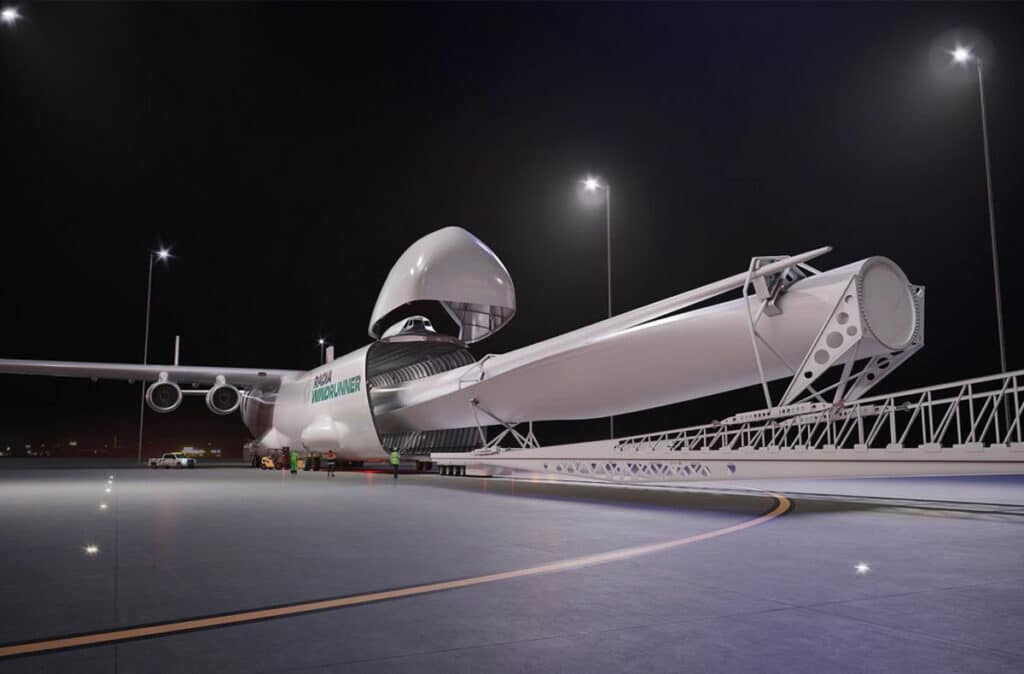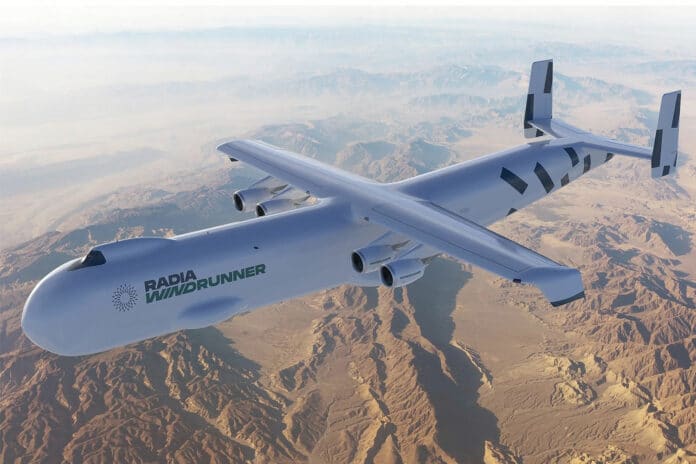The world’s growing need for low-cost clean energy is a pressing issue, and meeting decarbonization targets will require onshore wind energy to be a significant part of the electricity generation mix. However, there is a challenge in deploying the most efficient and cost-effective wind turbines due to their enormous blades. That makes them extremely difficult to deliver and deploy because bridges, tunnels, and road curves literally get in the way.
Radia, a company founded in 2016, has publicly launched a plan to address this challenge. They aim to design, build, and operate the world’s largest aircraft capable of deploying the largest and best-performing wind turbines to locations currently inaccessible to wind energy. This will enable the scale and speed of deployment that was previously impossible.
Radia’s revolutionary aircraft, WindRunner, is designed to transport large turbine blades and other components directly to wind farm sites. Radia is also leading the way in expanding onshore wind energy with the help of industry leaders and partnering with development teams to create new wind farms.

With Radia’s efforts, we can expect to see the widespread availability of clean, low-cost energy for the grid, green fuel production, and even commercial power users like data centers. This is a significant step towards meeting the growing demand for carbon-free electricity, expanding the wind energy market, and creating compelling business opportunities in renewable energy sources.
The Windrunner is supposed to be the world’s largest aircraft in terms of length and volume, measuring an astounding 356 feet (108 meters) long. This size will dwarf even the now-destroyed Antonov An-225 Mriya (276 feet/84 meters) or the now-defunct Ekranoplan (302 feet/92 meters).
With a total of 272,000 cubic feet (8,200 cubic meters) of cargo space, it will significantly outpace the Airbus BelugaXL, which offers only 78,000 cubic feet (2,209 cubic meters).

Thanks to this vast space, the WindRunner will be capable of transporting wind turbine blades as long as 344 feet (105 meters). It will be able to carry them to altitudes of up to 41,000 feet (almost 12,500 meters) and travel distances of up to 1,240 miles (1,996 km).
With a wingspan of 261 feet (80 meters) and two engines per wing, the plane will be capable of lifting a total of 160,000 pounds (72,575 kg) of cargo and traveling at speeds of Mach 0.6. However, what makes the WindRunner truly remarkable is its ability to take off and land on very short runways.
This is crucial because wind turbines are often located in remote areas, far from airports and other conventional landing facilities. With its short takeoff and landing capabilities, the WindRunner will be able to transport wind turbine components directly to these locations, making the installation process much more efficient and cost-effective.
WindRunner will be able to take off and land on runways that are just 6,000 feet long. These runways don’t have to be proper but can have packed dirt on the surface.
While all of these features may seem futuristic, the WindRunner may become a reality sooner than we think. Radia has already secured $100 million in funding from various sources, and they have announced that they are more than halfway through the process of designing, building, and certifying the aircraft. Unfortunately, we don’t have any estimates for when to expect to see the WindRunner in action.
By combining cutting-edge technology with practical design considerations, Windrunner promises to revolutionize the wind energy industry and help pave the way toward a more sustainable future.
